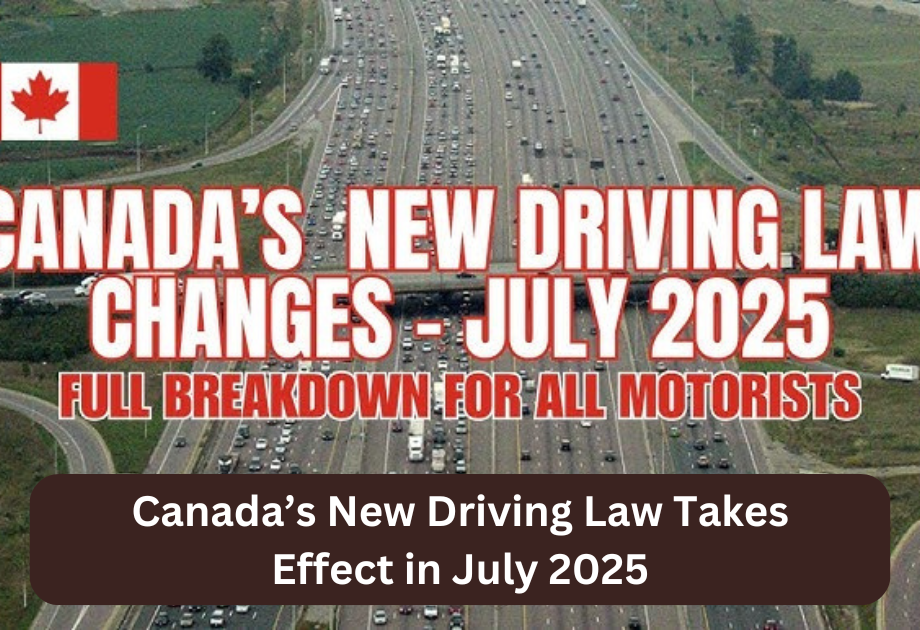Beginning July 1, 2025, new Canadian driving laws will take effect to enhance road safety, regulate modern technology use, and align national traffic rules with evolving global standards. These updates impact all drivers, including commuters, commercial drivers, and new license holders.
Whether you’re behind the wheel every day or only occasionally, understanding these changes is essential to stay compliant and avoid serious penalties.
Summary of Key Changes
| Area of Law | What’s New |
|---|---|
| School Zones | National guideline for 30 km/h near schools |
| Distracted Driving | Includes use of smartwatches and voice assistants |
| Vehicle Technology | Mandatory ADAS in all new vehicles |
| Driving Under Influence | Lowered BAC to 0.05 in several provinces |
| Fines and Demerit Points | Stricter penalty system for repeat offenders |
| Hands-Free Rules | Tighter rules on mobile and wearable device usage |
1. School Zone Speed Limit: Now 30 km/h Nationwide
A new federal guideline recommends a uniform 30 km/h speed limit in all school zones. While traffic enforcement remains a provincial matter, most regions are aligning with this rule to improve child safety.
- Time of Enforcement: 7 a.m. to 7 p.m. on school days
- Applies to: All urban and suburban school zones
- Implementation: Speed cameras and stricter police monitoring in high-risk areas
Drivers are urged to watch for updated signage and be aware of the new enforcement periods.
2. Distracted Driving Now Includes Wearables and Voice Commands
The definition of distracted driving is expanding. The law now considers the use of smartwatches, fitness trackers, and even voice-activated assistants (e.g., Siri, Alexa) while driving as violations.
Penalties:
- First Offense: $650 fine and 3 demerit points
- Second Offense: $1,000 fine and 5 points
- Third Offense: License suspension up to 30 days
Avoid any interaction with devices that requires physical touch or visual attention.
3. Advanced Driver Assistance Systems (ADAS) Mandatory in New Vehicles
Transport Canada has made it mandatory for all new vehicles sold from July 2025 onward to be equipped with ADAS features, including:
- Forward Collision Warning
- Lane Departure Warning
- Automatic Emergency Braking
This aligns Canadian standards with the U.S. and EU, aiming to reduce high-speed collisions and improve accident response times.
Used vehicles are not subject to this requirement, but automakers will need to comply for new models and imports.
4. Lower Blood Alcohol Content (BAC) Limits for DUI Charges
Several provinces, including Ontario, British Columbia, Alberta, and Quebec, are lowering the legal BAC limit to 0.05. Previously, 0.08 was the nationwide threshold for criminal DUI charges.
Consequences of 0.05–0.079 BAC include:
- Immediate roadside suspension (3–7 days)
- Vehicle impoundment
- Higher insurance premiums
- Mandatory participation in driver awareness programs
Drivers should be cautious—even one drink may now result in legal action.
5. Updated Fine and Demerit Point System
The penalty structure has been reformed to introduce a graduated system based on:
- Number of prior offenses
- Severity of the traffic violation
- Time elapsed since last infraction
This means drivers with repeat minor violations can now face higher fines and faster license suspension than before. This change applies across most provinces and territories.
6. Stricter Hands-Free Rules
The updated law further clarifies what is allowed and prohibited in terms of device usage while driving.
Permitted:
- Bluetooth-connected phone calls
- In-car voice-controlled navigation systems
- Music control via steering wheel buttons
Prohibited:
- Holding or touching your phone at any time
- Operating navigation apps via phone screen
- Using smartwatches for texts, calls, or media
The law applies whether the car is moving or stopped at a red light. Offenders will face fines and demerit points, especially for second or third offenses.
Why These Changes Matter
These updates are based on growing concerns:
- A national rise in distracted driving collisions
- More pedestrian injuries in school zones
- The need to standardize safety features in vehicles
- Pressure from insurance providers and road safety advocates
Canada aims to reduce serious collisions by 20 percent by 2030, and this legislation is a foundational step toward that goal.
What Drivers Should Do Now
To stay compliant:
- Check your vehicle’s ADAS compatibility before purchasing a new car
- Avoid using any device not integrated into your vehicle’s dashboard
- Plan alternative transportation after drinking, regardless of amount
- Observe new school zone speed signs and enforcement times
- Review your province’s exact penalty structure for any updates
The July 2025 driving law changes mark a significant shift in Canada’s road safety policy. With new technology, stricter penalties, and updated speed zones, all drivers must adapt to avoid fines and protect others on the road.
By staying informed and adjusting driving habits now, Canadians can not only comply with the law but also contribute to a safer, more responsible driving environment.
FAQS
Q1: Do these changes apply across all provinces?
Most laws are recommended federally but adopted and enforced by provinces individually. Check with your local Ministry of Transportation.
Q2: Can I still use my phone for navigation?
Yes, but only if the device is mounted and no physical interaction is required while driving.






















